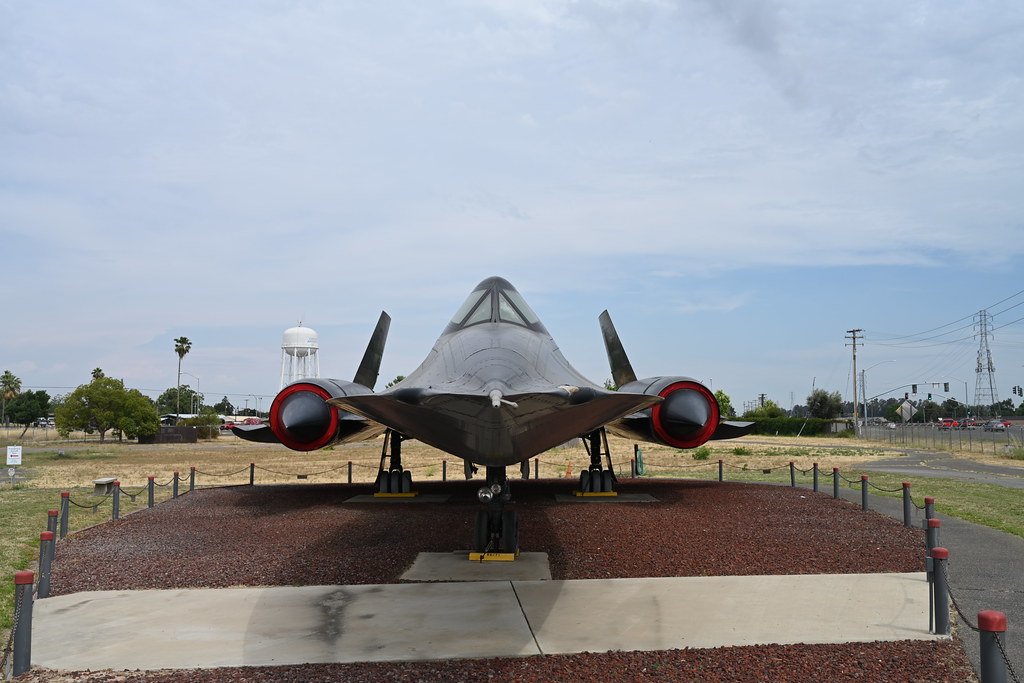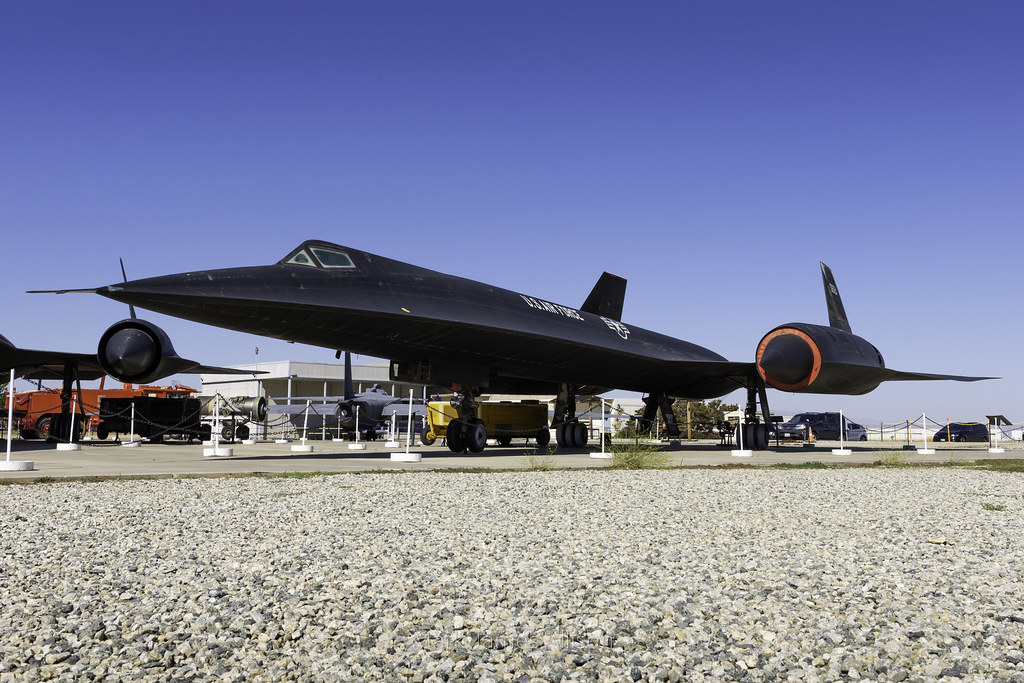#lockheed california
Photo

1961
2 notes
·
View notes
Text

The Structural Test Article (STA-099) and a Lockheed L-1011 TriStar in the test rig at Lockheed facility in Palmdale, California.
Date: February-March 1978
#Structural Test Article#STA-099#Space Shuttle#Space Shuttle Challenger#Challenger#OV-099#Orbiter#NASA#Space Shuttle Program#Lockheed#Palmdale#California#February#March#1978#Lockheed L-1011 TriStar#Lockheed L-1011#L-1011 TriStar#L-1011#TriStar#Passenger Jet#my post
37 notes
·
View notes
Text
SR-71 Blackbird - Castle Air Museum. Atwater, California | 6/10/2023
#nikon z7ii#desertmarauder#photographers on tumblr#california#travel photography#sr-71#blackbird#sr-71 blackbird#lockheed#aircraft#spy plane#castle air museum#atwater
1 note
·
View note
Text
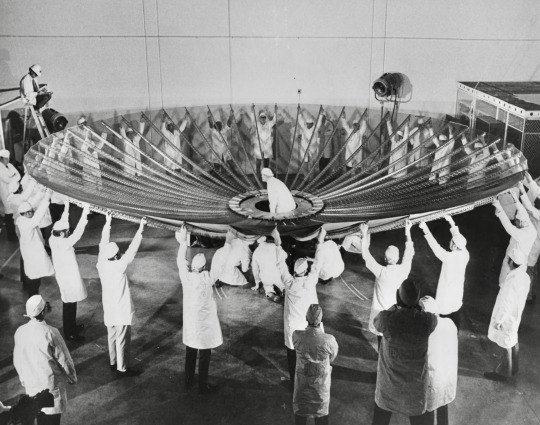
Ring around the rosie with a 30-foot space antenna at a Lockheed facility in Sunnyvale, California, 1972.
355 notes
·
View notes
Text
@denatakruri showing us how protesters are chained together and putting their bodies on the line to block the entrances of Lockheed Martin, a weapons manufacturer, in Sunnyvale, California.
#palestine#gaza#free palestine#israel#jerusalem#i stand with palestine#فلسطين#free gaza#israel is a terrorist state#israeli war crimes
209 notes
·
View notes
Text

Lockheed Martin employee Sally Wadsworth working on the fuselage of a P-38 Lightning, California, 1944
63 notes
·
View notes
Text

Rockwell XFV-12A

Rockwell XFV-12A
by Alex Stoll

Around 1970 the Navy could not see how it was going to be able to replace its old Essex and Midway carriers with Nimitz-class supercarriers. Admiral Elmo Zumwalt directed a study of alternatives which resulted in the Sea Control Ship (SCS), a mini-carrier equipped with V/STOL fighters and ASW aircraft. The USN invited manufactures to propose demonstration programs for a new aircraft, called the V/STOL Fighter Technology Prototype, to replace the outdated Harrier and serve on the SCS or other ships much smaller than conventional carriers: BAe and MD proposed an improved Harrier and a supersonic Harrier with a PCB (Plenum-Chamber Burning) engine; Boeing and Northrop proposed jet-powered tail-sitters; Lockheed-California proposed a propeller-driven tail-sitter; and Rockwell proposed a canard-delta aircraft powered by a large and enormously powerful engine that used the ejector-lift system for V/STOL. The Navy awarded the contract to Rockwell in 1972, instead of choosing designs based on proved technology, and the XFV-12A designation (twelth in the V series, not in the F series; the F-12 was the interceptor verison of the Blackbird) was allotted. Even though the forward fuselage and landing gear of the A-4 and the wing box, air intakes, and fuel tanks of the F-4 were used to speed the program up, it still ran far behind schedule. The prototype was rolled out in December 1976 and the first flight was scheduled for 1979.
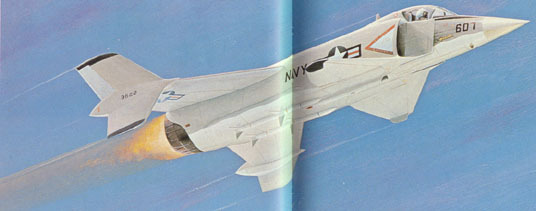
Engine Configuration
For takeoff and landing, the entire engine was ducted to hollow-section "ejector flaps" (also called augmentor flaps) out along the wings and the canard by pilot command via a diverter valve box. The high-energy hot gas forced fresh air from above through the ejector flaps at a ratio of 7.5:1 to boost thrust by 70 percent. The ejector flaps could be raised or lowered to provide a smooth transition from vertical to horizontal flight or vice versa. After the XFV-12A's cancellation, de Havilland Canada designed an aircraft with ejectors build into the roots of a delta wing. GD incorporated their concept into the E-7, a F-16-based delta-winged STOVL aircraft. DHC built a large powered model and tested it in 1987. The EL system was large and control was difficult as a result of the large air mass moving through the wing root during transition, and nothing came of it (though not because the EL couldn't produce enough thrust as in the XFV-12A's case) despite the attractive low exhaust velocity.

Cancellation
Rockwell and Pratt & Whitney experienced several major technical problems, and the thrust boost from the ejector flap system was never as large in the full-scale aircraft as predicted from data collected by test rigs and sub-scale models; the XFV-12A could not leave the ground. Eventually funding dried up, the SCS was canceled, and the program proved a disappointment; however, in most future ASTOVL programs, large-scale powered models were used because of the experience gained in the XFV-12A program.

123 notes
·
View notes
Text
No. 15 - PSA (Pacific Southwest Airlines)

Thank you to @lobstersinmyhouse for requesting PSA! And, in all honesty, this is exactly my feelings too. Pack it up, post over.
...okay, no. I am going to write a post, but I make no secret of loving PSA's airplanes. After all, one is even my icon.

image: Piergiuliano Chesi
There was never an airline like it before PSA sprang up in 1949, and there has never been an airline like it since. Decades after its demise I still feel a real sense of grief about the fact that it's gone. Pacific Southwest Airlines hasn't existed for longer than its entire time in operation and it mostly only operated in a single state, but it remains one of the most beloved airlines ever to exist. I'm certainly far from immune to catching their smile. So I'm very, very excited to cover the iconic grinningbirds, one of the best-known airline liveries of all time even 40 years after the regional carrier which wore it ceased existing.
youtube
PSA officially stands for Pacific Southwest Airlines. Unofficially, it was the Poor Sailor's Airline. According to a button they put out, it was this.

image: psa-history.org
But really, it can stand for anything you want. I think it stands for Pretty Smiling Airplanes.
You see, PSA's marketing leaned into the fun and casual as much as it was possible for an airline to do. They called themselves "The World's Friendliest Airline". Their branding was all bright, colorful, delightful. One aspect of it is particularly well known.
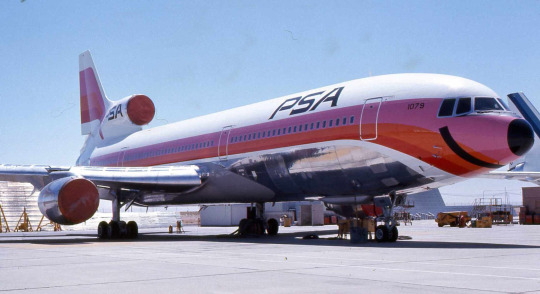
image: Piergiuliano Chesi
The name "grinningbird" is literal. PSA's fleet was lovingly painted with massive smiles directly under their noses. Their advertisements encouraged people to "catch our smile" across the state of California.

A preserved DC-3 in original Pacific Southwest livery
PSA was started as a single leased DC-3 hopping from San Diego to Oakland. Apparently their ticket office was literally a refitted military surplus latrine where they weighed passenger baggage on a bathroom scale. When they expanded with DC-4s they painted rectangles around the windows to make them look more like DC-6s. This was in 1955. And then, by the early 60s, they were taking off.
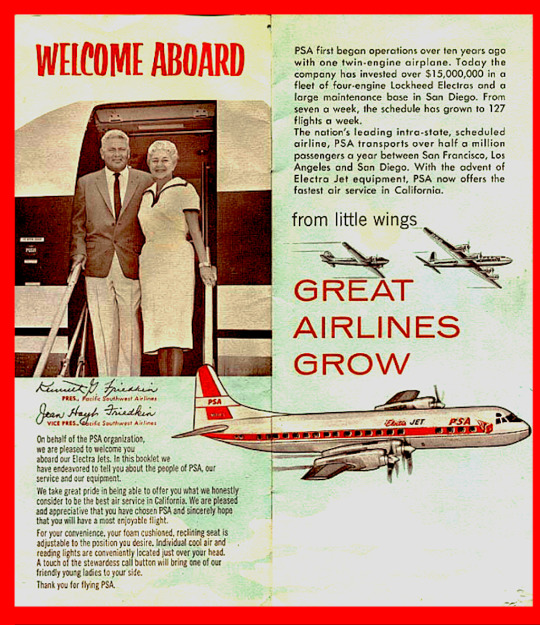

A pre-smile PSA Electra. The L-188 Electra is, of course, my favorite jet plane.
image: Jon Proctor
It was in the 60s that their planes stopped saying 'Pacific Southwest Airlines' and started just being PSA, and it was in the 60s when they caught their smiles. This was the point when PSA became PSA, transforming from just another intrastate airline in the pre-deregulation era to a turning point in aviation history.
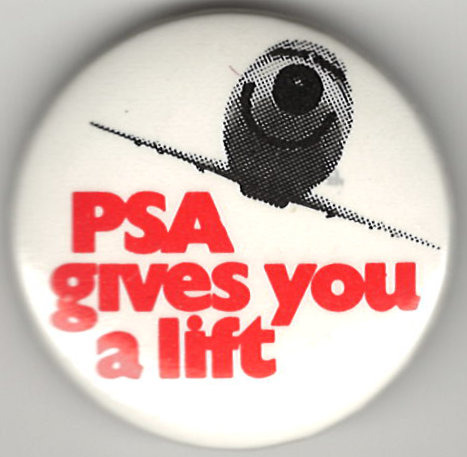
a 1972 promotional button
image: psa-history.org
While the smiley faces are the most significant historical fact about PSA, also notable is the fact that they were the first low-cost carrier in history. Although PSA's routes were limited to Southern California, they charged $9.99 for a ticket other airlines would charge $13.50 or $22.05 for - and keep in mind that in today's money that's a difference of hundreds of dollars. Free of federal fare taxes and operating frequently, PSA grew at an intense pace with its new fleet of Lockheed L-188 Electras.

I love the L-188 Electra (not to be confused with the earlier L-10 Electra best known for Amelia Earhart reasons). Although Lockheed has long since moved over to exclusively making weapons for killing people, back when they were in the civil airliner market they made the most incredible planes which somehow ended up commercially flopping time after time. The Electra, for instance, was all but killed immediately by two early crashes caused by a sneaky design flaw. These were fixed, but the type's reputation had already been sullied. (Interestingly, similar early design flaws with far less prompt responses failed to kill either the DC-6 or the DC-10, despite the latter causing the deadliest crash in history at the time and the former having had the serious potential to give us a timeline where the President of the United States was killed because his presidential transport had a design flaw which encouraged going up in flames midair.) Ironically, the Electra is actually an insanely reliable and sturdy plane, and the example pictured is still in service as an air tanker under the registration C-GZCF, still doing her thing at just 63 years young. (Another Electra in Air Spray's fleet is a similar age but also survived being bisected across the belly by her own detached propeller, and she literally flew two days ago. These planes are on a level only shared with Nokia cell phones, especially for their size.)
That paragraph became about the Lockheed L-188 Electra. I did not mean for it to be, but I am leaving it in, because I love this plane. Looks great with the smile, too. The roundness of the nose gives the distinct appearance of something like a teddy bear snout.
From this point things only grew quicker. PSA continued to be PSA, acquiring more aircraft to fly more passengers. They did expand routes eventually, and once the 1978 Deregulation Act allowed they flew to some other states and even Mexico. Despite this, they remained an icon in their home state, and are often called "the unofficial flag carrier of California".

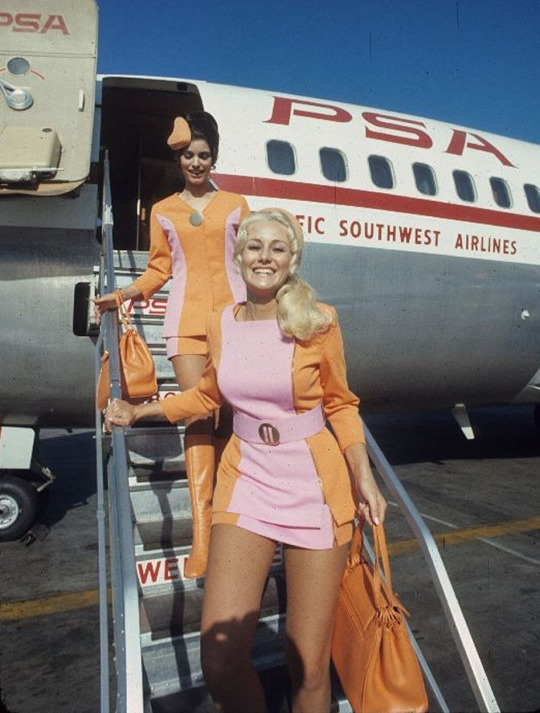
PSA stewardesses. I can't find an original source for either of these pictures, which have been widely spread without context or credit - although significant effort has been made to archive PSA's promotional content, a lot of it is, sadly, free-floating orphaned bits.
PSA's stewardesses wore bright pink and orange uniforms of miniskirts, hot pants, and go-go boots. They were encouraged to joke around with passengers, and so were the pilots. Other airlines at the time were still only slowly losing the unapproachable aura they had cultivated of stiff, sterile luxury and gravitas. PSA would get you where you needed to go without any fuss and they'd charge you half as much for it. And they weren't sloppy, either. Despite their low fares, PSA was incredibly safe, having one fatal accident in a span of time where American Airlines had 16, and even though nostalgia is obviously a factor I've only ever heard glowingly positive accounts of PSA, its service, and its staff.
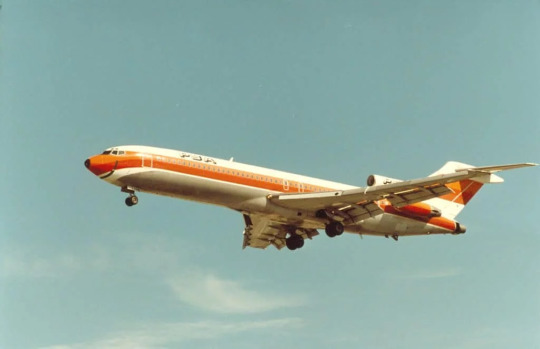
image: Bill Larkins
PSA's fleet was...eclectic. Though they operated a few very popular models, like the Boeing 727 and McDonnell Douglas MD-80 series, a lot of their offerings were somewhat uncommon. The plane in my profile picture is one of their two L-1011 TriStars, another of Lockheed's underappreciated airliners and by far the most advanced wide-body aircraft of its time. PSA was unique in that it operated a jumbo jet, their "Mother Grinningbird", on a route that was not just domestic, but intrastate. They also apparently operated a single Bell 206 helicopter, which I can find no additional clarification on. Lastly, they flew one of the oddest airliners ever built in both function and appearance, the British Aerospace 146.
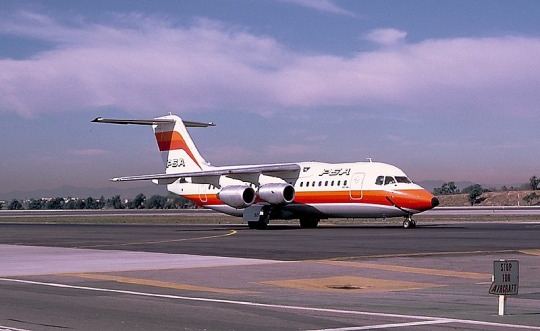
Just your regular high-wing jet. No thrust reversers necessary. Western-made but rocking the Il-76 wing anhedral. Super quiet because the powerplants are based off what you'd put on a helicopter. Seats less people than a 737-200 - six-across layout for maximum discomfort - and flies exclusively puddle jumps...yeah, I think four sounds like the right number of engines.
image: Ted Quackenbush
Across all these planes, they found a livery that worked and they kept going with it. The reason this post is so long is to give context to just how important this livery is. The grinningbirds were what started low-cost carriers, paving the way for the silly names of jetBlue airplanes in a future its founders couldn't even have imagined. The shift to approachability over prestige in airline marketing was PSA's lasting gift to aviation, as were the low fares and the knowledge that a 'budget' airline didn't have to be dodgy or unpleasant - they just had to charge less than TWA and Western.
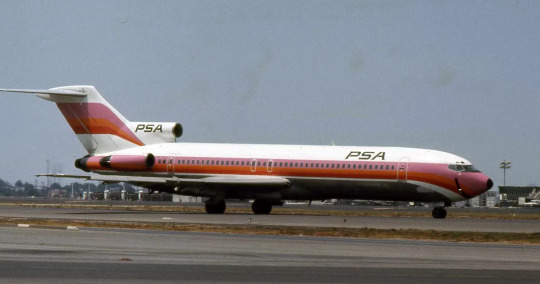
image: Piergiuliano Chesi
PSA's colorscheme was incredibly vibrant. The red and orange colors feel warm and tropical, complementing the California sunshine in which these planes spent their time. Earlier liveries also had a shocking hot pink shade above both, though it was eventually painted over due to issues with paint fading - I think the livery is vastly improved with its presence, but I suppose needs must. Despite the airline serving commuters more than vacationers it puts one in mind of things like beaches and ice cream stands - warm, high-energy things. The sorts of things one might smile about, if they like those things. I hate those things, but these planes make me like the idea of them, because they're just so darn happy to take me there!
The design of the fuselage is incredibly bold despite not using much more paint than any other airline of the day. While the striking colors definitely contribute to the overall look being more than the sum of its parts, I think there's also a few bits of clever design that really elevate the design of the plane.

The tail has a design almost like an inverse hockey-stick. Instead of following the cheatlines for maximum sleekness it chooses to diverge from it, creating a sharp angle that keeps the aerodynamic feeling while feeling fresh from similar designs of the time. By having the thin line from the tail trailing down towards the fuselage it prevents the block of empty space on a regular hockey-stick livery, where the forward portion of the empennage is fully unpainted, and creates a feeling of continuous color and excitement while keeping some staccato punch.
Similarly subtle yet effective are the stripes themselves. They aren't of an equal width - rather, the red stripe is thinner than the orange one, and in planes with the additional pink stripe this one is even wider. It feels a lot more dynamic than simple even-width stripes, feeling almost as if you can see the colors start to mix into each other. The 'mixing' feeling is helped by the fact that the cheatlines wrap under the nose instead of simply ending where they meet. The small painted white line under the main colored ones, above the unpainted metal of the underbelly, creates basically an extra two stripes for the price of one despite being so subtle many people probably didn't notice it.
On its own, the design of the bodies of PSA planes is already good, but it practically ceases to matter when you get to the face.

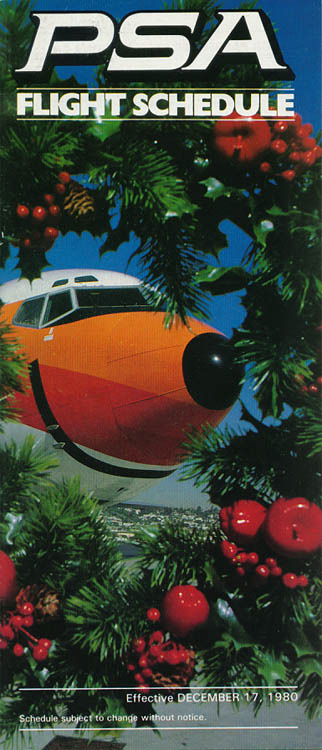
The way the top line of color wraps around the back of the cockpit windows makes it look almost like the plane is wearing sunglasses. And then there's the little painted black nose and, of course, the huge ear-to-ear grin. I don't really know what else to say about this because it's all been said time and time again.
I genuinely don't know how else to express it. PSA's livery was gorgeous and it was perfect for PSA. In all honesty, I don't think it's possible to improve it at all. My one slight criticism is that the actual PSA wordmark, though designed well, is a bit small and out of the way, but to be totally honest it's barely necessary. You see the smile and you know exactly who that plane is flying for.
PSA gets a PSA+.
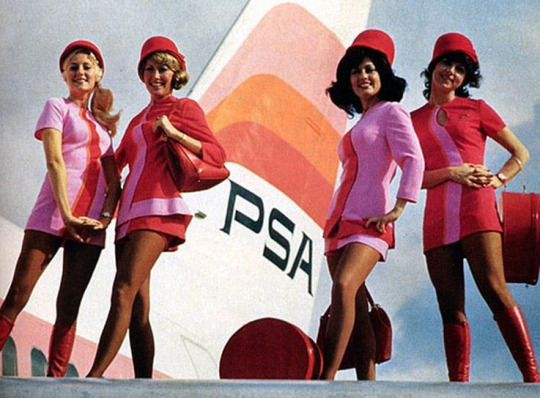
So what happened to PSA, if they were so successful? Did an economic shift catch them off-guard? Did some demographic evolution rob them of their old customer-base? Did a change of management result in a new owner running the airline into the ground? Did it have anything to do with the fact that the one time they were involved in an accident it spent eight months as the deadliest crash in US history?
Nope. They got bought out by USAir because they wanted more routes on the West Coast.
Yeah. That's the story. Neither a bang nor a whimper. They left one morning and didn't come back. That was the end of PSA, the first-ever low-cost carrier, California's most beloved airline, and one of the best-designed liveries in airline history if not the very best.
There is, however, one final twist. USAir eventually was sucked into the gaping maw of American Airlines. With this merger American Airlines also inherited the rights to PSA's IP. In classic fashion, they created a wholly-owned subsidiary by the name of PSA Airlines, just to make sure nobody else could get the trademark.


Under the iron fist of first US Airways (USAir's eventual rebrand) and later American Airlines, we were allowed one last grinningbird - an Airbus A319-100 registered N742PS. It's strange, seeing the PSA livery on a model of airplane they never operated. It's a rare example of the design on airframes that have that rather distinct 'default' modern empennage, all sharp and tall with no t-tail or third engine. The implementation could take some notes and the colors look bizarrely plastic, but I will never stop loving her no matter how much they take from her. How could I not, with that smile?
Unfortunately, in April of this year she was re-painted to a standard American Airlines livery. Although the Allegheny and Piedmont heritage liveries were removed at the same time, I almost don't even notice their absence because of the loss of our very last holdout from a much more colorful time and place. Part of me feels a sort of ripping-the-bandaid-off relief at it. American Airlines shouldn't get to parade around the skin of a much better livery worn by a much better airline. That isn't theirs; they didn't earn it. And there's no way to rebuild PSA now that times have changed and the industry is unrecognizable from the days when a ticket from San Diego to Burbank cost $9.99. All the same, the loss of yet another smile hurts. There's no way it wouldn't. And at the end of the day it makes me feel a little dead inside just imagining the mindset of the American Airlines executive who walked by her in the hangar and instead of smiling back gave the order to paint her white. And that day, the sky got a little less colorful and a lot sadder.
Maybe, in a strange sense, the way it happened is better. Nobody ran PSA into the ground. They did not cause some sort of reputation-ruining accident through willful negligence. Their customer service did not decline until they were widely grumbled about. They didn't die infamous for poor safety and loose morals like Pan Am, or splitting at the seams and betraying their reputation like Chalk's Ocean Airways. No, I don't think an organic shriveled going-under would have held any more dignity than this. I think the ending PSA got is as graceful as the ending to something like PSA could be. There is no end to the glory days which forces itself into our memories. There is no decline. No sunset to fly off into. There is a loss to mourn, but no accompanying moment to curse. Lost at sea, ship never found, nothing to imply a terrible fate; all we know is the poor sailors aren't here anymore.
Maybe it's not universally known to people who aren't interested in subjects that bring them close to it, but to those of us who love planes PSA is truly special. Its quiet apotheosis has made it synonymous with the very best an airline could be. The joy of a time where a regular person could finally afford their first plane ticket and be greeted by colorful people who talk to them like friends, where even the planes are smiling, is encoded into the DNA of PSA's remnants, into every anecdote told by an aging former stewardess and into every Polaroid taken of one of those smiling planes parked on a sunny California tarmac. It was there, and then it was a distant echo of warm breezes and idle chatter that feels almost close enough to reach out and touch. PSA never died. One day it was flying passengers to their destinations, planes smiling their same smiles. The next day it was fond memory, already graduated to the distant sunny shores of nostalgia.
youtube

#tarmac fashion week#grade: a+#region: north america#region: united states#era: 1960s#era: 1970s#era: 1980s#pacific southwest airlines#requests#defunct airlines#regional airlines#double sunrise#long haul#galley gala
107 notes
·
View notes
Photo

Amelia Earhart photographed with a Lockheed Vega 5P in January, 1935, just before her solo flight from Honolulu to California.
#Amelia Earhart#Female pilot#Woman aviator#Aviation pioneer#Women in history#Lockheed Vega#Airplane#Flying#Women in aviation
256 notes
·
View notes
Photo
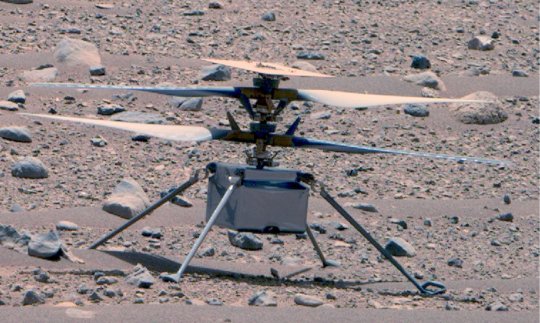

NASA’s Ingenuity Mars Helicopter Phones Home The intrepid rotorcraft may head skyward again within the next couple of weeks. The 52nd flight of NASA’s Ingenuity Mars Helicopter is now in the official mission logbook as a success. The flight took place back on April 26, but mission controllers at NASA’s Jet Propulsion Laboratory in Southern California lost contact with the helicopter as it descended toward the surface for landing. The Ingenuity team expected the communications dropout because a hill stood between the helicopter’s landing location and the Perseverance rover’s position, blocking communication between the two. The rover acts as a radio relay between the helicopter and mission controllers at JPL. In anticipation of this loss of communications, the Ingenuity team had already developed re-contact plans for when the rover would drive back within range. Contact was re-established June 28 when Perseverance crested the hill and could see Ingenuity again. The goal of Flight 52, a 1,191-foot (363-meter) and 139-second-long flight, was to reposition the helicopter and take images of the Martian surface for the rover’s science team. “The portion of Jezero Crater the rover and helicopter are currently exploring has a lot of rugged terrain, which makes communications dropouts more likely,” said JPL’s Josh Anderson, the Ingenuity team lead. “The team’s goal is to keep Ingenuity ahead of Perseverance, which occasionally involves temporarily pushing beyond communication limits. We’re excited to be back in communications range with Ingenuity and receive confirmation of Flight 52.” Sixty-three days is a long time to wait for the results of a flight, but the data coming in indicates all is well with the first aircraft on another world. If the remainder of Ingenuity’s health checks are equally rosy, the helicopter may fly again within the next couple of weeks. The target for Flight 53 is an interim airfield to the west, from which the team plans to perform another westward flight to a new base of operations near a rocky outcrop the Perseverance team is interested in exploring. More About Ingenuity The Ingenuity Mars Helicopter was built by JPL, which also manages the project for NASA Headquarters. It is supported by NASA’s Science Mission Directorate. NASA’s Ames Research Center in California’s Silicon Valley and NASA’s Langley Research Center in Hampton, Virginia, provided significant flight performance analysis and technical assistance during Ingenuity’s development. AeroVironment Inc., Qualcomm, and SolAero also provided design assistance and major vehicle components. Lockheed Space designed and manufactured the Mars Helicopter Delivery System.
80 notes
·
View notes
Text
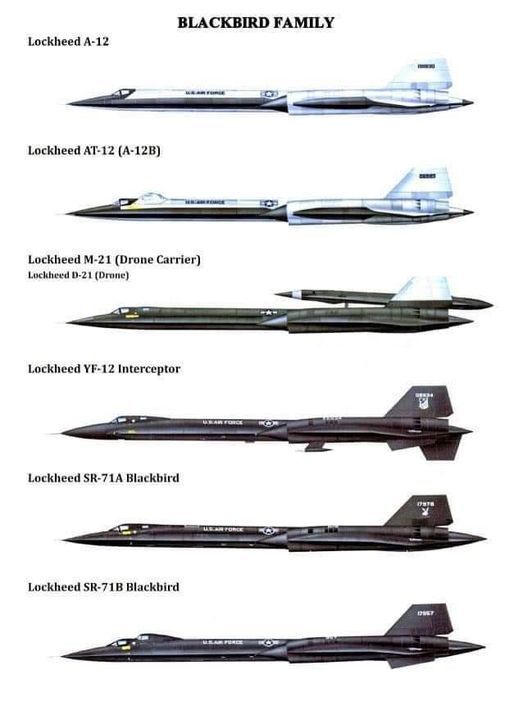

The SR-71, along with her sisters A-12 MD -21 and YF -12, was built at the Lockheed Skunk Works plant in Burbank, California, in the early 1960s. Kelly Johnson, designer of the Blackbirds and his prestigious crew of engineers set out to design and build perhaps the most remarkable aircraft in aviation history. Working with Titanium, a metal that had desirable characteristics for the high heat environment of Mach Three flight, proved in itself to be a daunting challenge. The metal had never been forged in large quantities and the quality had to meet strict controls for consistency. In addition, the US had to import the metal indiscreetly from the largest source in the world; the USSR. The landing gear on the SR-71 is the largest single piece of forged Titanium. Other segments of forged Titanium was made oversize and then milled to exact tolerances for stringers, fuselage and wing construction. At the end of construction almost 90% of the Blackbirds material consisted of Titanium.
~First time stealth was applied to an air frame~
Stainless steel was used for hydraulic and fuel lines. From the ground up the Blackbirds were designed to withstand the 900+ degree temperatures on the surface skin at Mach three or better. There were expansion joints in almost all fittings as the aircraft grew several inches from the high heat generated. To make the aircraft stealthy, plastic composite panels shaped like a triangle were inserted on the outer perimeter of the wing surfaces. There were alternating titanium and composite plastic wedges designed to break up the incoming radar signals. Rudders were canted inward for the same reason. The paint consisted of minute iron ferrite balls and the cost per quart of Blackbird paint was nearly $400. Needless to say, the entire aircraft was not regularly repainted but rather spot painted as needed. Exotic alloy metals such as Hasteloy X and ceramics were used in the construction of the Pratt & Whitney J-58 engines. Temperatures in the afterburner sections reached 3200 degrees Fahrenheit.
Leland Haynes is my source of some of the facts.
~ Linda Sheffield Miller
210 notes
·
View notes
Text



STA-099 (later converted Challenger (OV-99)) being moved into the Lockheed facility for vibration stress testing.




The frame was tested for a year simulating all of the loads an operational orbiter would experience.
Date: February 14, 1978
Posted by Bill Roberts on the "STS-The Space Shuttle Legacy" Facebook group page: link
source, source, source
Stephen Isherwood Collection: link, link, link
#Structural Test Article#STA-099#Space Shuttle#Space Shuttle Challenger#Challenger#OV-099#Orbiter#NASA#Space Shuttle Program#Overland Transport#Lockheed#Rockwell International#Palmdale#California#February#1978#my post
22 notes
·
View notes
Video
Lockheed A-12 60-6924 by Mark Allison
Via Flickr:
Article 942 - The first A-12 built on display alongside it's SR-71 successor at the Blackbird Airpark in Palmdale, CA. Article 924 was first flown on the 26th April 1962 and accumulated 418.2 flight hours during its flying life. -14/10/2022
#Lockheed#A-12#60-6924#Article#942#Oxcart#Blackbird Airpark - Palmdale#CA#Blackbird#Airpark#California#Air#Park#Joe#Davis#Heritage#CIA#USAF#Reconnaissance#Strategic#Spy#Plane#Mach#3#flickr
2 notes
·
View notes
Text
by Jessica Costescu
A student group at the University of California, Berkeley, School of Law published an anti-Semitic cartoon depicting the school's dean, who is Jewish, holding bloody utensils over a dinner table, a version of the ancient blood libel employed in anti-Semitic propaganda that accused Jews of using the blood of Christian children for baking matzah and other rituals.FreeBeacon
Berkeley's chapter of Law Students for Justice in Palestine posted a cartoon depicting law school dean Erwin Chemerinsky holding a fork and knife dripping with blood over a dinner table, with the caption "No Dinner With Zionist Chem While Gaza Starves!" The graphic, which was posted on Monday, was deleted approximately half an hour later, but the Washington Free Beacon obtained a screenshot. Shortly after, the cartoon was reposted, but without blood covering the utensils.

The Instagram post came in response to an email from Chemerinsky last week inviting third-year law students to eat dinner in his home, according to the Law Students for Justice in Palestine chapter. The group is led by Malak Afaneh, a third-year Berkeley law student who has commended Palestinians for their "active resistance against the apartheid state of Israel."
"This dinner is the prime example of a normalization PR event that hopes to distract students from Dean Chem's complicity and support for the genocide of the Palestinian peoples," the group said in a caption under the cartoon. "While Dean Chem wants to wine and dine his students, he continues to approve of UC investments into weapons companies like Blackrock, Lockheed Martin, RTX, Northrop, and more."
Law Students for Justice in Palestine encouraged students to boycott "all of Chemerinsky's events" and demand that Berkeley divest "from ALL TIES to the apartheid state of Israel." Berkeley Law School declined to comment. Chemerinsky did not return a request for comment.
The grotesque cartoon comes after the House Committee on Education and the Workforce announced last month that it was requesting internal documents regarding Berkeley's response to the outbreak of anti-Semitism on campus.
Afaneh started at Berkeley Law in 2021, according to her LinkedIn profile. One year later, she shared her desire to use her law degree to aid the Palestinians in their "battle for liberation."
"For years, Palestinians everywhere have engaged in active resistance against the apartheid state of Israel," Afaneh wrote in a 2022 Facebook post. "As a lawyer, I hope to aid in this battle for liberation, so that I and generations to come may see a Palestine free from the river to the sea."
Another student, Matt Fernandes, is a member of and organizer with Berkeley's Law Students for Justice in Palestine. In 2022, Fernandes promoted a bylaw that amended the group's constitution to include a ban on pro-Israel speakers from participating in club events. He also accused Zionists of holding "positions of power" with "connections to media," according to anti-Semitism watchdog Canary Mission.
Berkeley Law Students for Justice in Palestine did not respond to a request for comment.
The Free Beacon in a Feb. 1 report unearthed a similar cartoon at the University of Pennsylvania. Dwayne Booth, a lecturer at Penn's Annenberg School for Communication, published a slew of anti-Semitic cartoons, including one that depicts Zionists sipping Gazan blood from wineglasses.
12 notes
·
View notes
Text
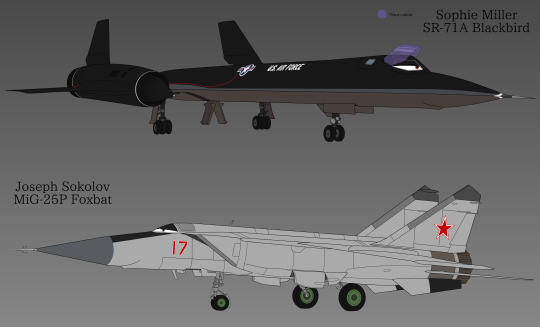


Sophie Miller
Gender: Female
Nationality: American
Place of Birth: Palmdale, California, USA
Model: Lockheed SR-71A Blackbird
Role: Strategic reconnaissance
Joseph Sokolov
Gender: Male
Nationality: Russian
Place of Birth: Nizhny Novgorod, Nizhny Novgorod Oblast, Russia
Model: Mikoyan-Gurevich MiG-25P "Foxbat-A"
Role: Interceptor
Many of my older characters are currently going through some updates to their designs and/or backstories, these two included. Bit of a Romeo and Juliet situation as it was during the height of the Cold War that these two fell in love and had a child, keeping that child's birth a secret because they were worried something might happen to her (which did eventually happen, but not in the way they ever expected).
#disney planes#disneyplanes#art#digital art#original characters#ocs#planes oc#sophie miller#joseph sokolov#spottylightning art
22 notes
·
View notes
Text
Yesterday Ukraine hit Belbek (in Crimea), and Israel hit Baalbek (in Lebanon).
Saint Barbara was born in the city of Baalbek, whose relics are in Kyiv.
The city of Santa Barbara (California) also has a division of Lockheed Martin.
Ukraine hit Belbek with ATACMS missiles produced by Lockheed Martin.
Small world we live in.
Slava Ukraini! 🇺🇦 Am Yisrael Chai! 🇮🇱
5 notes
·
View notes
